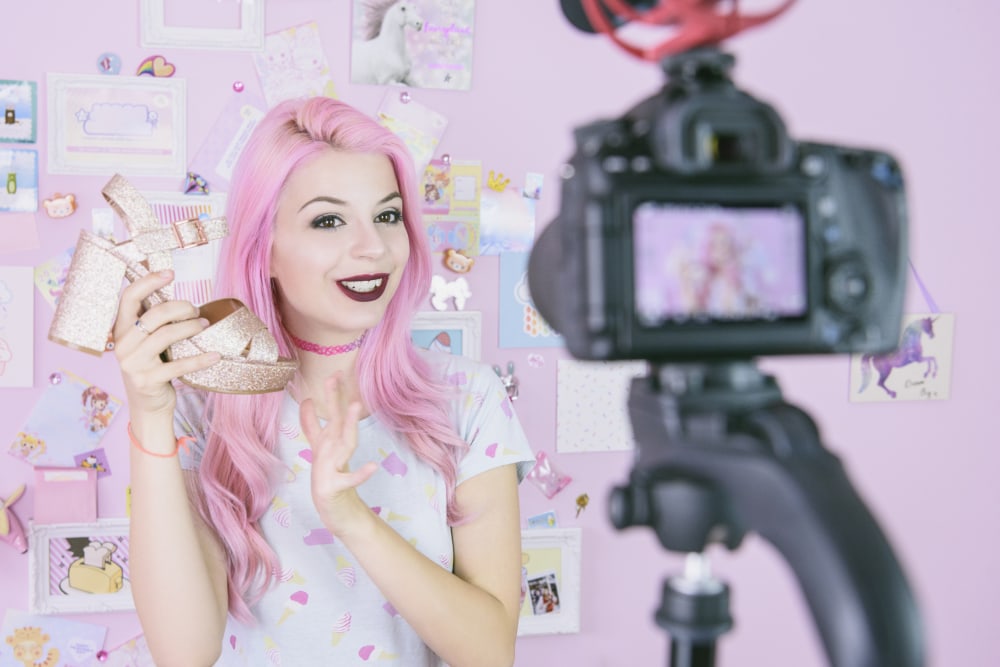How Influential Are Social Media Influencers?
Being a “social media influencer” has got to be the greatest job in the world, or so it would seem.
Simply by becoming well-connected on the Internet, you can be paid for touting a product. If you become extremely well-connected — like, say, the Kardashian clan’s Kylie Jenner — you can command jaw-dropping fees. Jenner, the top-rated social media influencer in the world, with 141 million followers, reportedly receives $1 million for a single Instagram post.
Companies are willing to pay serious money to Jenner and the other big-time social media influencers because they are seen as providing credibility to their products.
Why? Because they are liked by lots and lots of people. Simple.
You might be thinking: “Hey, I’m cool and stylish and I have lots of online friends. Maybe I can’t make Kylie Jenner money, but I’m willing to start at the bottom and settle for $1,000 per post.”
If so, a word of caution.
First, being a social media influencer is harder than it looks. “Being an influencer can be an exhausting, burnout-inducing job,” Kevin Roose writes in The New York Times, “and the people who are good at it have typically spent years working their way up the ladder.”
Second, the bubble may be starting to deflate for social media influencers. Some companies that were early adapters in paying influencers to tout their products have decided to pull back, in part because the online influencer marketplace has become “riddled with deception,” as the Wall Street Journal recently reported. “Influencers have strained ties with advertisers by inflating the number of their followers, sometimes buying fake ones by the thousands,” Suzanna Kapner writes in the WSJ article. “They also have damaged their credibility with real-life followers by promoting products they don’t use.”
There have been revelations of widespread abuse by influencers claiming to be more influential than they really are. In July, a cybersecurity firm, Cheq, released a report claiming that advertisers are wasting $1.3 billion annually on influencers who use fake followers, purchased at little cost from “click farms,” to buff up their claimed influence.
In addition, the “engagement rates” — which measure how users interact with content via likes, comments, shares, etc. — have been dropping significantly.
FTC Is Cracking Down
Little surprise then that the Federal Trade Commission has been stepping up its oversight of social media influencers. The FTC has made it clear that it is prepared to act against influencers and advertisers alike if a “material connection” between influencer and product is not made clear, and now appears to be cracking down. Among its recent actions is a $2.5 million settlement of a lawsuit that was the agency’s first involving “the sale of fake indicators of social media influence.”
It’s probably not surprising then that some companies are looking for alternatives. Gap and Banana Republic, for instance, are now turning to their own customers to provide testimonials, offering them $150 to pose with their favorite branded outfits on Instagram.
While some companies are turning to tradition, others are turning to totally new kinds of influencers: Nonhuman ones.
Computer Generated Imagery, or CGI, influencers are avatars created by programmers, and they can seem amazingly lifelike, both visually and in terms of their personalities. The number-one CGI influencer in the world is Lil Miquela, the creation of Brud, a Los Angeles computer software company that specializes in robotics and AI applications for the business world. At last count, Lil had 1.7 million Instagram followers, and was busy hawking the wares of several top companies, including Prada and Balenciaga
Those companies are attracted to Lil Miquela’s large and growing following of mostly young women and girls, and also to the fact that virtual influencers possess other advantages: (1) They’re cheaper. (2) They’re easier to work with.
“When working with a real influencer a brand needs to hire a marketer or an agency to help them devise the strategy, find influencers and then execute it,” Sam Allcock writes in The London Economic. “This is very expensive as they are paying both the influencer and the marketer. But when brands work with CGI influencers they are working with one company only, as the CGI influencers are usually owned by the agency. This reduces costs.”
But they’re not human — and that’s what gave social media influencers their cache and their credibility in the first place.
Should You Trust Influencers?
CGI influencers may be a passing fad. And now that the FTC is moving in, perhaps the fake influencers will find other shady enterprises to pursue. But in any event, those who rely on social media influencers to guide them in life might be well advised to consider a few tips:
- Look closely at engagement rates. An influencer with a huge following with minimal response might not be on the up-and-up.
- Examine the quality of the engagement responses because they, too, can be bought. Generic responses or ones that don’t seem relevant can be tip-offs to a fraudulent influencer.
- Examine the influencer’s audience quality. Tools like IG Audit can provide estimates on what percentage of an influencer’s followers are real and what percentage might be bots.
And take what they say with a grain of salt. After all, they’re getting paid.

